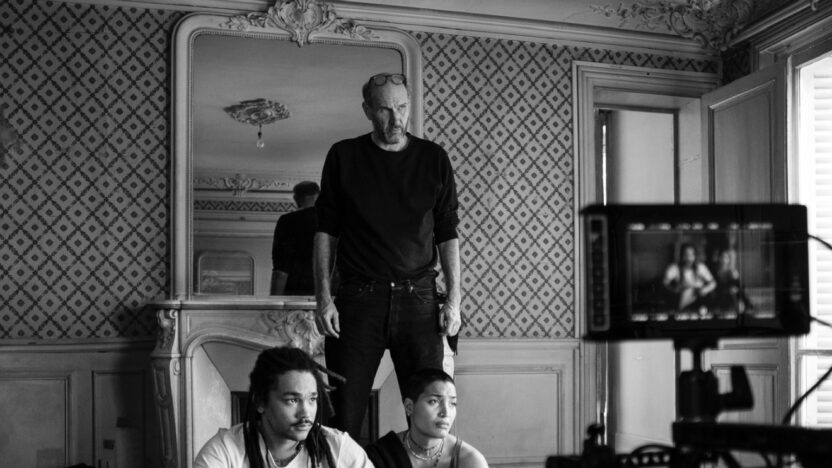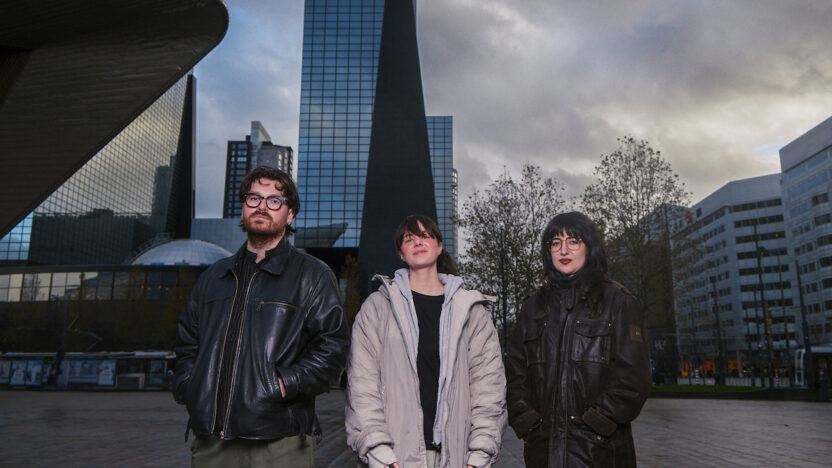Through Cinema We Shall Rise! Early Afro-Asian Film Festivals in the ‘Spirit of Bandung’
This year’s Focus programme Through Cinema We Shall Rise! marks the 70th anniversary of the 1955 Afro-Asian Conference in Bandung, with a thematic exploration of cinemas of the Global South. IFFR programmer Stefan Borsos discusses the idea behind the programme and contextualises the selected films.

In 1955, Indonesia hosted the first Afro-Asian Conference in the West Javanese city of Bandung – the first articulation and, thus, the origins of an idea that developed into what we now call the Global South. At the centre of this meeting between representatives of 29 nations (not all at that point independent) were questions of economic cooperation and joint political perspectives. In the wake of the conference, various Afro-Asian organisations started mushrooming, bringing the ideas, hopes and interests from Bandung into the cultural arena – among them the Afro-Asian Film Festival (AAFF), which would take place but three times: 1958 in Tashkent (Uzbekistan), 1960 in Cairo (Egypt), and 1964 in Jakarta (Indonesia). Just like the Bandung Conference, these three events laid the groundwork, in theory and practice, for a film culture of the colonised and dispossessed – a politic of revolutions and reformations IFFR became part of at the latest, with the establishment of the Hubert Bals Fund.
Reinforcing IFFR’s commitment to unearthing the stories of the colonised dispossessed, our focus programme Through Cinema We Shall Rise! celebrates the 70th anniversary of the Bandung conference by exploring not only the various, yet distinct filmic articulations of the ‘Spirit of Bandung’, but also putting the films into a larger historical context of filmmaking in the Global South. The period in question corresponds to a moment in history when the political situation in some of the key countries involved in this circuit, including Indonesia, China, Egypt, North Vietnam and the Soviet Union, allowed for a vision of cinema which was leftist, sometimes socialist, fiercely anti-colonial, yet decidedly popular. This was to end in the mid-sixties with the pogrom and subsequent persecution of the Communist Party of Indonesia (Partai Komunis Indonesia, PKI) and all things left(ist) in 1965-66, the start of the Cultural Revolution in China in 1966, Egypt’s defeat in the Six-Day War in 1967, the escalation of the Vietnam War in 1965 and the end of the Soviet Thaw period in the mid-sixties. A fourth festival edition in the North Korean capital of Pyongyang was announced, but never materialised.
Despite their manifold contradictions, the range of films represents an alternative cinema which cannot easily subsume under any simple designation. Even a single film could be an amalgam of socialist realism, melodrama and more specifically local or regional theatrical and performative traditions – in short, highly complex works of art despite their sometimes didactic or propagandistic function. Thus, they need to be seen as an early, popular expression of Third Worldist filmmaking which would be later theorised as Third Cinema most famously represented by films such as The Hour of the Furnaces (Fernando Solanas, Octavio Getino, 1968, Argentina), Memories of Underdevelopment (Tomás Gutiérrez Alea, 1968, Cuba) or Xala (Ousmane Sembene, 1974, Senegal). While even these celebrated works have been fading from public memory, the films screened at the AAFF are ever more ready for (re-)discovery.
How much the political contexts, the ever shifting fault lines and relationships between participating countries mattered, becomes clear when one looks at the origin of the festival. China played a major role when organising the first Asian Film Week in 1957 in Beijing with a lineup of 17 films from 15 Asian countries. As the AAFF later on as well, the Asian Film Week needs to be understood as a form of Cold War diplomacy bringing together various actors with different political agendas, but common economic interests providing a cultural contact zone for exchanging and discussing ideas, and to access and understand foreign cultural artifacts and interact with foreigners – without any Western validation, strictly from and to the Global South.
While the Asian Film Week would set the coordinates, including a highly heterogeneous selection, the inclusion of both Thai melodrama Santi-Vina (Thavi Na Bangchang, 1954) and the Lebanese neo-realist drama Where to? (George Nasser, 1957) points to the fact that things were still in flux in 1957. The former, Thailand’s first colour film, was written and co-produced by an anti-communist American war veteran with reported CIA connections and had won an award at the first edition of the CIA-backed Asian Film Festival in Tokyo in 1954, the latter premiered in Cannes in 1957, making it to the European film festival circuit which would otherwise be closed for films presented at the AAFF.
This counter-programming agenda, along with a more unified political perspective, became much more pronounced at the first AAFF in Tashkent which would also include films from African countries and Soviet Asian republics. However, since filmmaking in Africa, particularly in Sub-Saharan Africa, was mostly in the hands of colonial forces or often lacking any film industries to speak of, African films at the AAFF, with the notable exception of Egypt, were mostly documentary works – such as Freedom for Ghana (Sean Graham, 1957) made by the state-sponsored Ghana (formerly Gold Coast) Film Unit. The short celebrates the country’s independence, but also presents it as an administrative act, an orderly, peaceful handover, more generously granted by the British than hard-won by the Ghanaian people. Much more confrontational is the most celebrated film in Tashkent: Bachtiar Siagian’s Turang (1957), a tragic love story in the midst of the armed struggle against Dutch colonialists. Directed by leftist Indonesian filmmaker and thinker Siagian (1923 – 2002), it is unique in its focus on the peasant community’s revolutionary efforts in Northern Sumatra, subtly pointing to the loss of minority narratives in the uniformist nation-building process (especially in General Suharto’s post-1965 ‘New Order’ version of it). Turang needs to be seen as one of the most accomplished articulations of an Indonesian Third Cinema; a major rediscovery not to be missed – along with the documentary Bachtiar (Hafiz Rancajale, 2025) premiering in IFFR’s Cinema Regained section.
What the VOC (Vereenigde Nederlandsche Geoctroyeerde Oostindische Compagnie) was to the Dutch, the EIC (East India Company) was to the British. Like other films at the Second AAFF 1960 in Cairo such as the biopic A Poet’s Fate (Boris Kimyagarov, 1959, USSR) and the historical romance Kais and Laila (Ahmed Dia El Din, 1960, Egypt), Veerapandiya Kattabomman (B.R. Panthulu, 1959, India) presents the freedom struggle in a period setting. Shot in beautiful Gevacolor and adapted from his own stage play. Tamil superstar Sivaji Ganesan won the Best Actor award for his iconic portrayal of the eighteenth-century Southern Indian chieftain.
More contemporary, yet still historical is the equally epic Ballad of the Cart (Yamamoto Satsuo, 1959, Japan) which chronicles 50 years of trials and tribulations of a peasant family. One of the major leftist Japanese filmmakers of his time, director Yamamoto came to the Third AAFF in Jakarta not only to present his film, but also found interest in the delegation from North Vietnam which eventually led to the making of Yamamoto’s documentary Vietnam (1969, Japan). The Vietnamese presence in Jakarta also included A Phu and his Wife (1961), an anti-feudalist and anti-colonialist love story directed by documentary filmmaker Loc Mai. But while the film’s female protagonist My still needs to be rescued by A Phu in the film’s finale, Henry Barakat’s The Open Door (1963, Egypt) presents a striking Bildungsroman about a woman’s political and sexual awakening in the Nasser era (1954–1967) making this not only a nationalist, but also a feminist classic.
Even more militant is Xie Jin’s famous The Red Detachment of Women (1961), “a monument of Chinese revolutionary cinema” (Srikanth Srinivasan) which, along with other titles, illustrates that a development, a radicalization, has taken place in the years from Tashkent to Jakarta. Equally, Aleksandr Medvedkin’s damning examination of the state of things on the African continent, Law of Baseness (1962, USSR), is pure agit-prop compared to the more newsreel-like Freedom for Ghana. Despite emphasising the friendship and mutual respect of Asians and Africans, Medvedkin’s look at other cultures and countries aligns with an exoticist tendency in similar AAFF films also to be found in Wang Jiayi’s exuberant romantic musical film Five Golden Flowers (1959), an example of China’s peculiar ethnic minority film genre (shaoshu minzu dianying). Shot on location in Tibet with Tibetan actors, Li Jun’s Serfs (1963) claims a far higher degree of authenticity than Wang’s folkloristic look at the Bai people. However, the presentation of a story of how the People’s Liberation Army (PLA) breaks the Tibetans’ shackles of feudalism was also an propagandistic attempt at legitimising China’s invasion of Tibet at the Third AAFF.
In the same year when the First AAFF took place in Tashkent, the armed resistance group Chushi Gangdruk was formed in occupied Tibet. On time for the Bandung anniversary, 2025 sees the world premiere of its story as a Tibetan production made in exile in India. Adapted from the novel Flight at the Cuckoo’s Behest, the English-language Four Rivers Six Ranges (Shenpenn Khymsar, 2024) is an anti-colonialist action-epic par excellence, very much in the ‘Spirit of Bandung’. The friend and enemy stereotypes may change, but the attitude remains: Down with all oppressors!
With special thanks to Yuki Aditya, Ahmed Refaat Bahgat, Olaf Möller, Nikolaus Perneczky, Elena Razlogova, Johannes Schönherr, Bunga Siagian and the one and only Robert de Rek.
written by Stefan Borsos



